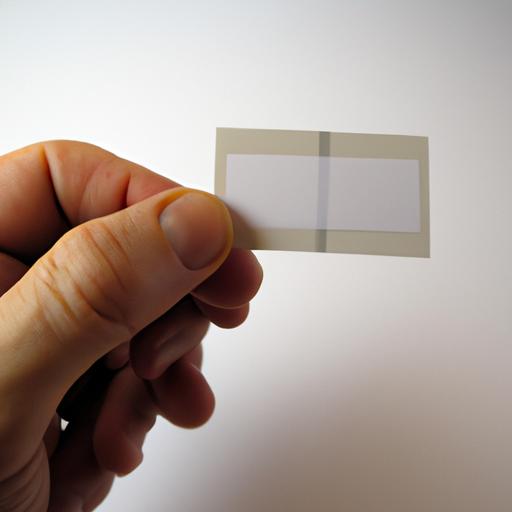- How Litmus Paper Works
Litmus paper is a simple and easy-to-use tool for testing the acidity or alkalinity of a substance. It works based on the science of chemical reactions and is highly effective in determining the pH level of a solution. The chemistry behind litmus paper is quite simple. Litmus paper is made of filter paper that is soaked in a mixture of natural dyes extracted from lichens. These dyes are organic compounds that are sensitive to changes in the acidity or alkalinity of a solution.
When litmus paper is exposed to an acidic solution, the dye in the paper changes to red. On the other hand, when litmus paper is exposed to an alkaline solution, the dye in the paper changes to blue. In neutral solutions, litmus paper remains purple. This color change is due to the chemical reaction that takes place between the dye in the paper and the hydrogen ions (H+) or hydroxyl ions (OH-) in the solution.
- Applications of Litmus Paper
Litmus paper has a wide range of applications in various fields. It is commonly used in laboratory experiments, medical and biological research, and in the food and beverage industry. The following are some of the applications of litmus paper:
Testing pH Levels: Litmus paper is a quick and easy way to test the pH level of a solution. The pH level of a solution is an essential factor in many industries, such as the food and beverage industry, where the acidity or alkalinity of a product can affect its taste, texture, and safety.
Testing for Acidity or Alkalinity: Litmus paper is used to distinguish between acidic and alkaline substances. In the food and beverage industry, litmus paper is used to test the acidity of fruits, vegetables, and other food products. In chemistry, litmus paper is used to test the acidity or alkalinity of various substances.
Medical and Biological Applications: Litmus paper is used in medical and biological research to determine the pH level of various bodily fluids, such as urine and saliva. It is also used to test the pH level of soil and water samples, which is essential in environmental studies. In addition, litmus paper is used to test the pH level of swimming pools and aquariums to ensure that they are safe for use.
Advantages and Disadvantages of Litmus Paper
As with any technology, litmus paper has its advantages and disadvantages.
Advantages:
- Litmus paper is simple and easy to use, requiring no special equipment or training.
- It is inexpensive and widely available, making it accessible to a wide range of users.
- Litmus paper is highly accurate and reliable when used correctly, and provides quick results.
- It can be used in a variety of settings, including laboratories, hospitals, and schools.
- Litmus paper is a non-invasive and non-destructive method of testing, making it ideal for use on delicate materials.
Disadvantages:
- Litmus paper is limited in its ability to measure pH accurately. It can only provide a general indication of acidity or alkalinity, rather than an exact measurement.
- It is affected by external factors such as temperature and humidity, which can affect the accuracy of the results.
- Litmus paper has a short shelf life and can deteriorate over time, especially if not stored correctly.
- It can only be used to test for pH levels and cannot detect other chemicals or compounds.
- Litmus paper is not suitable for use in highly acidic or alkaline environments, as it can become saturated and produce inaccurate results.
Conclusion
In conclusion, litmus paper is a simple, inexpensive, and widely available method of testing pH levels. It provides quick and reliable results, making it a popular choice for use in a range of settings. Despite its limitations, litmus paper remains a valuable tool for measuring acidity and alkalinity.
Future Developments in Litmus Paper Technology
As technology continues to advance, there are several potential developments in litmus paper technology on the horizon. These include:
- Improved accuracy and precision in pH measurements.
- Longer shelf life and improved stability.
- The ability to detect a wider range of chemicals and compounds.
- Integration with digital devices for easier and more accurate readings.
- Development of eco-friendly and sustainable materials for litmus paper.
Overall, the future looks bright for litmus paper technology, and we can expect to see continued innovation and improvement in this field.

